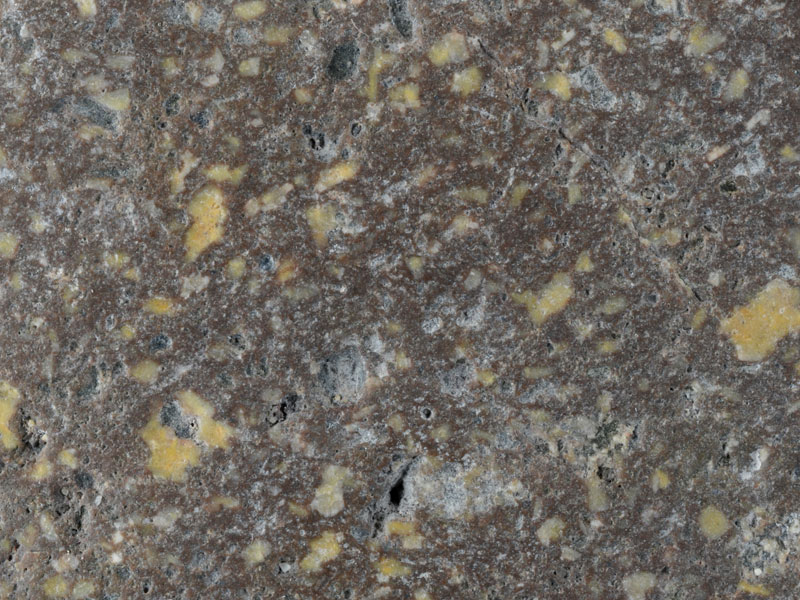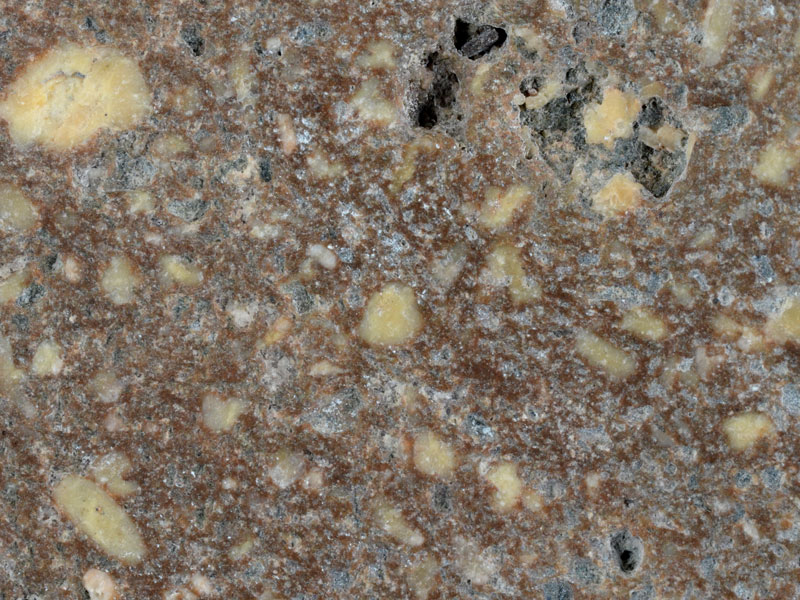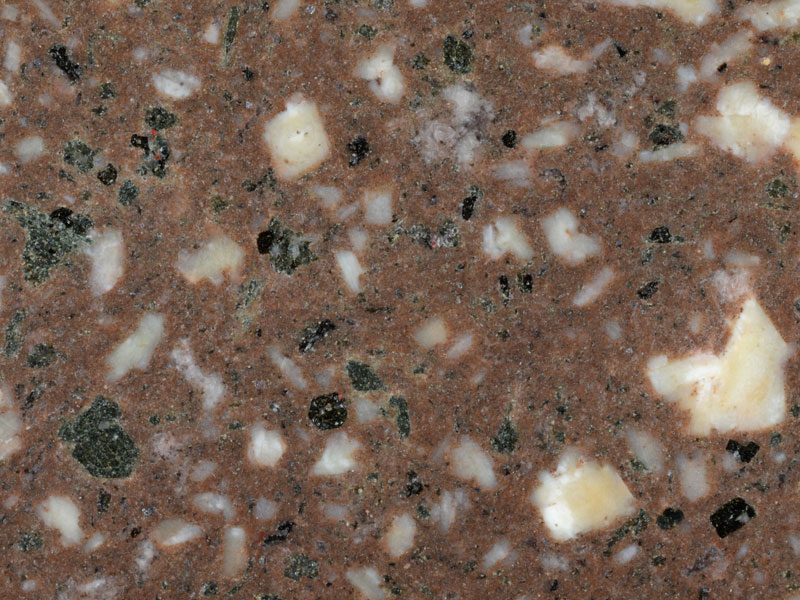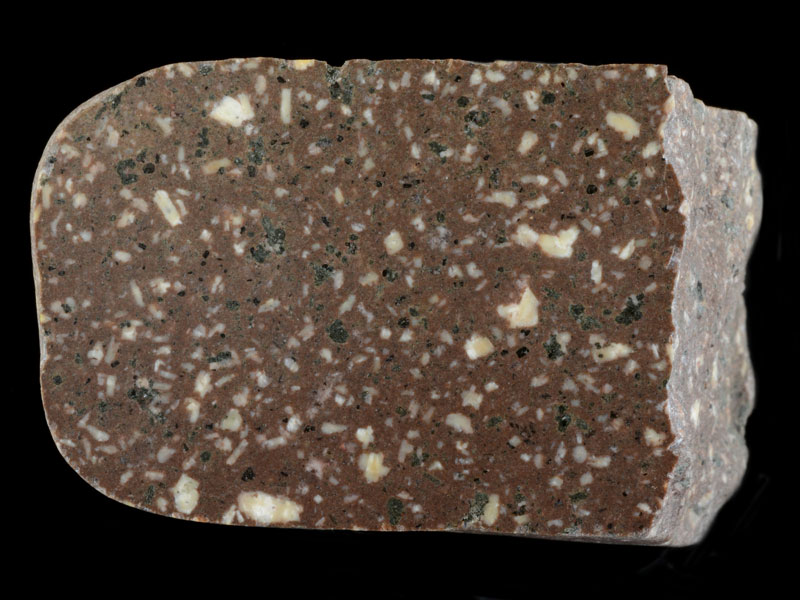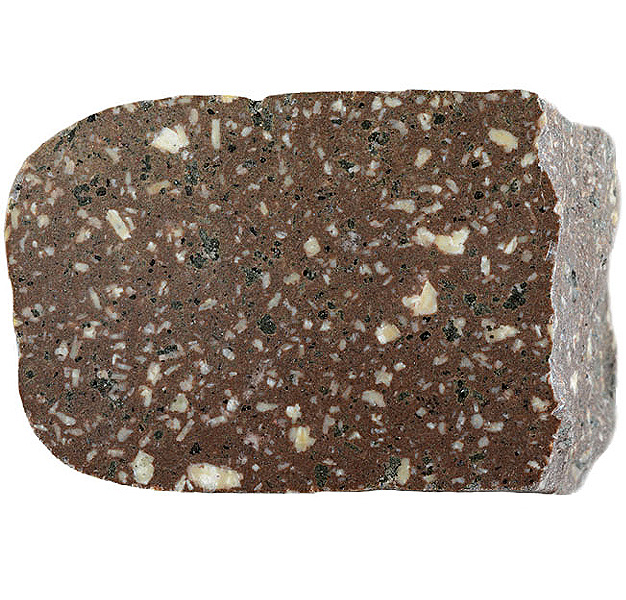
Fact sheet
This altered porphyritic basalt sample is from The Battery, a ruined gun emplacement built towards the end of the 1700s during the American War of Independence, at the entrance to Old Harbour at Dunbar. It became disused by the middle 1800s and was subsequently re-used as a hospital. The basalt is Carboniferous in age with 1-2 mm sized plagioclase phenocrysts and a fine grained groundmass.
The thin section shows that plagioclase phenocrysts are mostly altered to sericite, and groundmass contains altered grains of finer-grained plagioclase, altered biotite and altered glass. Another mafic mineral (originally augite or amphibole) is also present in the rock, but this is now totally replaced by green chlorite. The thin section also exhibits common flattened vesicles containing small euhedral quartz grains often at the margin, and a filling of carbonate cement.
The United Kingdom Virtual Microscope (UKVM) collection consists of igneous, sedimentary and metamorphic rocks from around the UK.
It is intended as a teaching resource, helping to tell the story of the common rock types and how they form, and reflecting the history of the UK at the margins of the continent of Europe. The collection is a series of teaching sets, for example igneous rocks from the North Atlantic Igneous Province and SW England; high-temperature metamorphic rocks from Scotland and low-temperature metamorphic rocks from Wales; and sedimentary rocks, including English limestones and sandstones.
